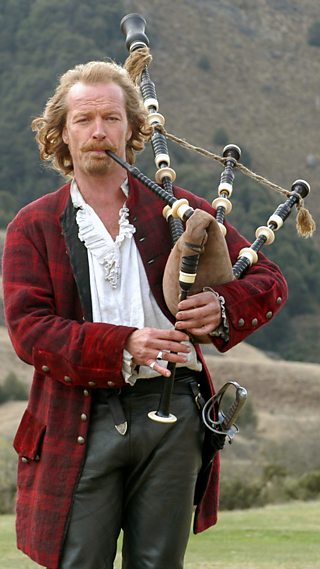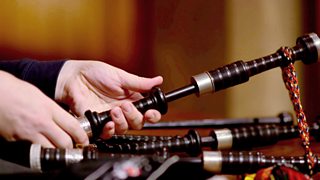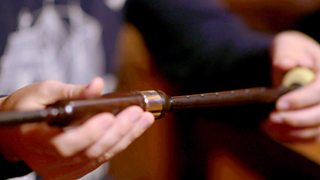How bagpipes work
The whole family of pipes are all based around very simple principals of a bag, chanter and drones.
All these things go together to make what we now know as the sound of the pipes.

The sound is key to their success. The distinctive skirl and drone is recognised the world over from Kingston to Kandahar.
There are dozens of different pipes in use around the world with many more lost in history.
Early pipes date back beyond 1000 years BC. The earliest records show pipe carvings on Hittite stones from the ancient Middle East.
The popular Great Highland Bagpipe is used the world over to lift the spirits with tattoos and massed pipe bands and to remember and mourn the dead at funerals and memorials.
It inspires soldiers to follow and audiences to get to their feet.
- Watch
About Finlay MacDonald
• One of the country’s finest contemporary pipers

He has performed with leading traditional artists such as Fred Morrison, The Unusual Suspects, La Banda Europa, Old Blind Dogs and Chris Stout.
The musician and composer is Head of Piping Studies at the and the and has even performed with Jay-Z, P Diddy and Alicia Keys at the MTV Music Awards in 2010.
The bag is the heart of the pipes; it keeps the air moving to all the other parts
Hand stitched and sewn, the bag is cut out of fine quality sheepskin, which is traditionally used because of its porous skin that lets moisture out but keeps the air in.

There's an air of mystery in the prepartion of the bag that comes from the secret seasoning the leather is treated with. Each bag is filled with a special mixture that treats the leather and seals any sections that might not be completely airtight.
The seasoning recipe is top secret and remains a closely guarded secret. Suggestions on online bagpipe forums for home-made seasoning recipes feature ingredients including honey, molasses, egg whites, glycerin, oil soap, hydrogenated cottonseed oil and pine cleaning fluid.
With mind boggling array of ingredients like that the recipes will probably remain secret forever.
Drones are the key to producing the pipes’ unique sound
Scottish pipes have three drones, two tenors which play exactly the same note and the bass which plays an octave below.

They are powered by drone reeds, which is a cylinder of wood split into two pieces for tuning purposes. The piper moves the reed when playing to adjust the tuning.
Traditionally, the drone reed would have been made from a piece of cane. However, synthetic drone reeds made of a plastic compound are now common.
In the body of the reed, is the tongue which sits at the top and vibrates against the body of the reed when air passes over it.
On its own it doesn’t sound like much, but when placed inside the drone the distinctive sound of the pipes is awakened.
The chanter creates the pipes’ melody
The finger holes share a familiarity with a recorder. The chanter makes nine notes from low G, low A, B, C, D, E, F, high G, and high A. These notes don't exactly correspond to modern tuning, the A most pipers play to is closer to a B flat.

Inside the chanter is a small reed which is made of cane or increasingly a synthetic plastic material. The smaller the reed the louder the sound it creates by vibrating then projecting a sound.
This is also why you need a bag to push enough air through to get the stiff reed vibrating.
Highland bagpipe music is written in the key of D major, where the C and F are sharp. Due to the lack of chromatic notes, to change key is also to change mode.
Are you ready for your first lesson?
Now you understand the mechanisms of the bagpipes, it is time for the first lesson. From grace notes to strikes, Finlay shares some of the basic elements required to play the bagpipes.

Practising the chanter
The basic elements required to play the bagpipes.
